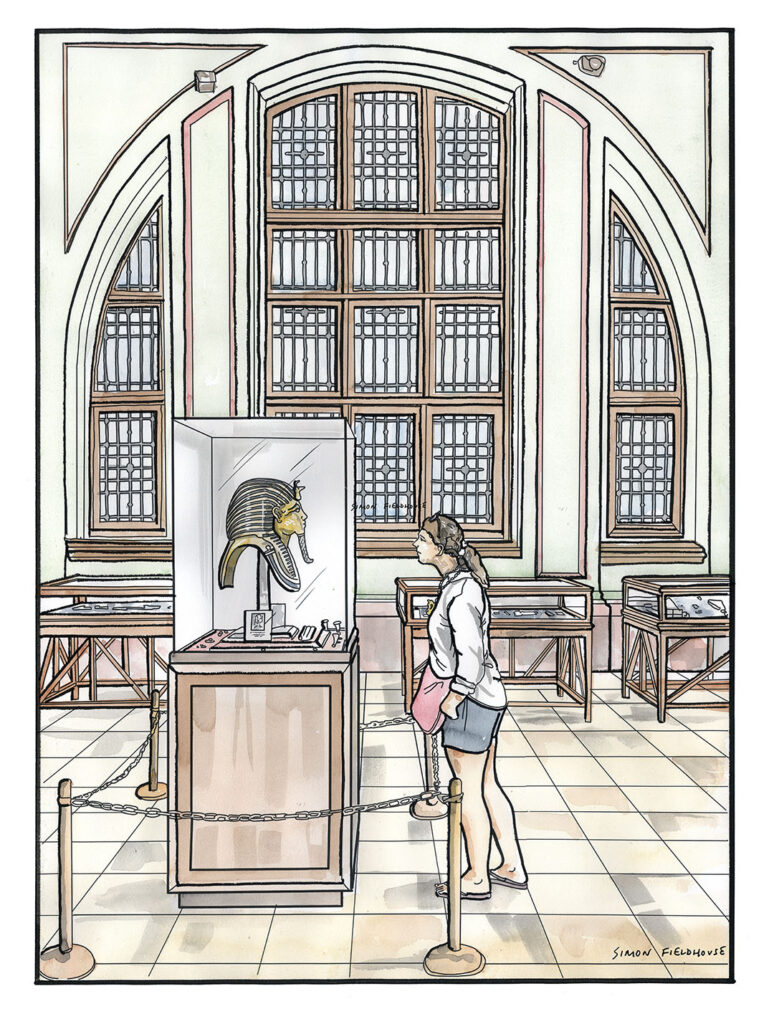
Mask of Tutankhamun - Cairo Museum
The Mask of Tutankhamun, housed within the illustrious Cairo Museum, stands as an unparalleled testament to the craftsmanship and mystique of ancient Egypt. This iconic artifact is not merely a relic; it is a tangible embodiment of history, cultural legacy, and artistic brilliance. Crafted over 3,300 years ago, this golden mask has transcended time, becoming an enduring symbol of Egypt’s opulent past.
Crafted from solid gold, the mask's intricate details mesmerize viewers. Its visage, representing the youthful countenance of the pharaoh Tutankhamun, showcases a delicate balance between regality and serenity. The smooth gold surface is adorned with vibrant colors and precious stones, signifying the reverence and skill ancient artisans held for their rulers. Lapis lazuli, turquoise, and other gemstones embellish the headdress and collar, enhancing its divine aura.
Beyond its aesthetic grandeur, the mask embodies profound cultural and spiritual significance. In ancient Egypt, death was perceived as a transition to another realm, and the funerary practices were intricate rituals aimed at ensuring a prosperous afterlife for the deceased. The mask, placed over Tutankhamun’s mummified face, served a vital role in preserving the pharaoh’s soul and facilitating his journey into the afterlife. Its intricate design and materials were believed to offer protection and guide the spirit through the challenges of the underworld.
Discovered in 1922 by Howard Carter within the pharaoh's tomb in the Valley of the Kings, the mask’s unveiling marked an archaeological milestone. Its pristine condition and unparalleled craftsmanship astounded the world and offered unprecedented insights into ancient Egyptian burial customs. The discovery catapulted Tutankhamun’s legacy into global fame and sparked immense fascination with Egyptology.
However, the mask's journey doesn’t end with its discovery. Over the years, it has weathered controversies and restoration efforts, adding layers to its story. In 2014, the mask underwent restoration after its beard was accidentally detached and hastily reattached with epoxy. This incident not only brought the mask into the public eye once again but also ignited debates about preservation ethics and the handling of priceless artifacts.
Today, housed within the Cairo Museum, the Mask of Tutankhamun remains a cornerstone of its collection. Its presence draws visitors from across the globe, captivating them with its allure and historical significance. The museum not only provides a sanctuary for the mask but also serves as a custodian of Egypt's rich cultural heritage, preserving it for future generations to admire and learn from.
Beyond its monetary or archaeological value, the mask transcends its physical form. It stands as a bridge between ancient and modern civilizations, inviting contemplation on the passage of time, the mastery of craftsmanship, and the enigmatic allure of Egypt's bygone era.
The Mask of Tutankhamun at the Cairo Museum encapsulates the essence of ancient Egypt—a civilization steeped in mystique, artistry, and spiritual beliefs. Its gleaming countenance continues to captivate, inviting us to delve deeper into the past and marvel at the legacy of a once-mighty pharaoh. As it rests within the museum's walls, it not only symbolizes Tutankhamun's reign but also echoes the timeless majesty of an extraordinary era.